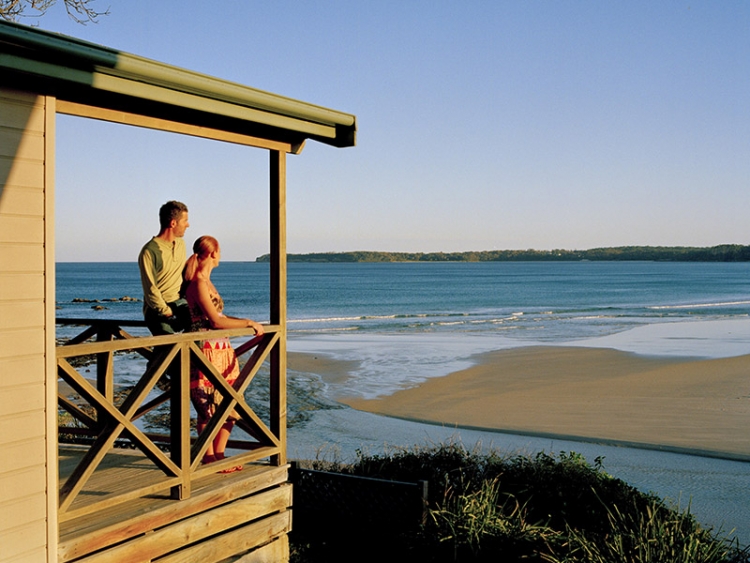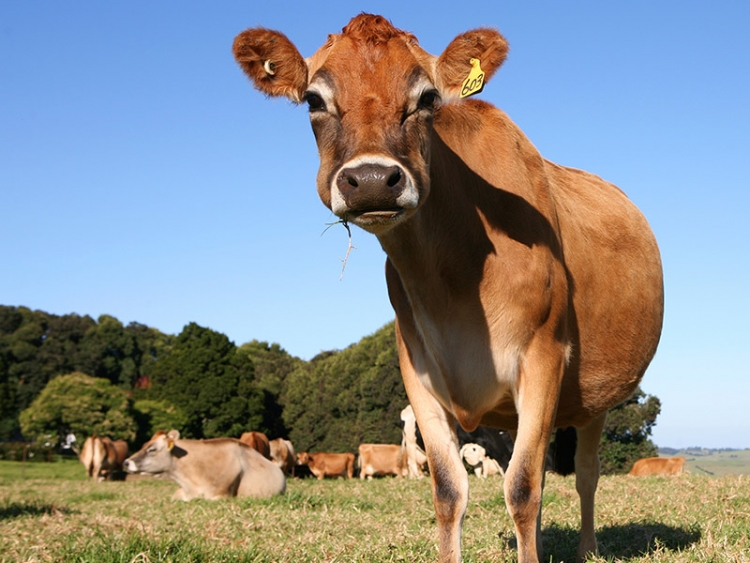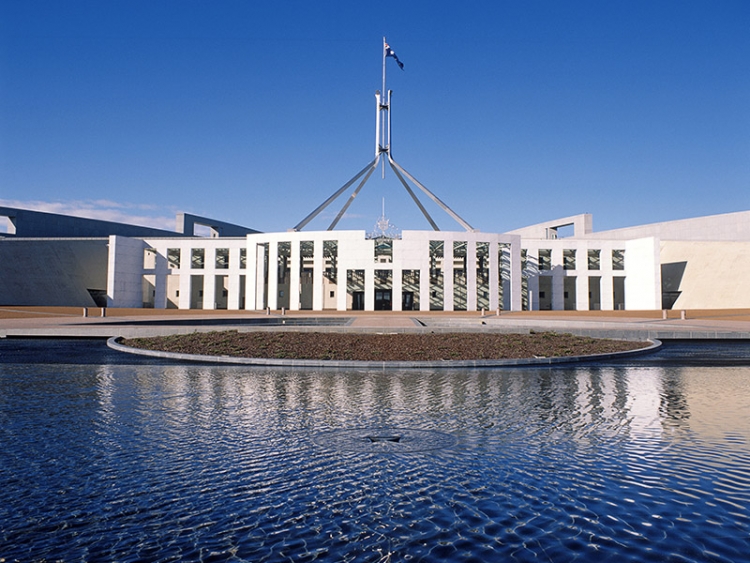Apply now: General Skilled Migration Assessment

raramuridesign support
Where future jobs will be - and where they won't
Joanna Tsakiridis started working as a receptionist in a business she loved so much she decided to buy it.
She went from sending invoices to making huge glass windows in her own factory - from receptionist to skilled tradeswoman in less than five years.
The opportunity to buy the Petersham aluminium and joinery business seemed too good to pass up for the single mother.
"Now we manufacture as well as install... and I have a receptionist of my own," said Ms Tsakiridis, one of just 22 female glaziers in Australia.
"I feel more involved now that I'm a tradie, rather than sitting behind a desk and just selling a product.
"I love it. It's one of the best things I've done, doing the hands-on work."
It also came as a surprise that the glazing industry would experience a boom in growth.
The federal government is reviewing its skilled occupations list which identifies professions and trades that appear almost future proof: where the jobs will be - and where they won't.
Glaziers and floor installers are among skilled workers in growing demand.
When Ms Tsakiridis bought her business, she knew all she needed to know about sales. But she felt the need to learn more about the trade. The business was installing ready made products, but it now makes its own windows at a factory Ms Tsakiridis established in Kingsgrove.
"I thought I should learn more about the business and how to cut glass," she said.
In 2014, she completed a course at Lidcombe TAFE where she learned how to cut glass, manufacture windows, timber sides and small security doors.
"I did my training at the same level as the guys. I loved it," she said. "The only restriction was lifting things into place, but we have machines for that."
GLAZIERS
In its submission to the government review which determines Australia's future skills needs, the Australian Glazing and Glass Association says the building design industry is making much greater use of glass in new constructions.
"Glass is being used a lot more in building than ever before," says the association's national training manager, Patrick Gavaghan. "It is such a good flexible product to work with.
"Architects and designers just love it. We can make it reflect or contain heat and it looks very good.
"The more technical the glass gets, the more technical the skills are required by the glazier."
Mr Gavaghan said there are about 22 female glaziers in Australia.
"Glazing now is a really good trade for females because they have a good eye for detail," he said.
FLOOR COVERING INSTALLERS
The Carpet Institute of Australia has also identified growing demand for carpet and floor covering installers who are in short supply around the country.
In its submission to the government review it says employers have reported that a "chronic and worsening shortage of floor finishers is adversely impacting their businesses in various ways".
"Independent skilled migration has a role to play in reducing the magnitude of the chronic under-supply of suitably qualified floor finishers, which affects flooring contractors, the residential housing and construction industries, flooring retailers, flooring manufacturers and distributors and consumers," the submission says.
ACCOUNTANTS
The accounting industry will also welcome overseas students who have provided a boon to the Australian economy.
Organisations representing accountants say there are more than 39,000 international students enrolled in accounting degrees contributing more than $1.7 billion to the economy.
The Accounting and Finance Association of Australia and New Zealand warns that "if significant changes were to be made to eligibility of foreign accountants for migration to Australia this would have undesirable impacts on universities and the economy".
The Chartered Accountants Australia and New Zealand says there are shortages of experienced accountants which can be "dealt with through employer nominated entry 457 visas".
"In the medium term of 10 or so years, openings for accountants in accountant jobs of around 11,000 per annum appear likely," the submission says.
But some medical organisations, which have in the past been the subject of Australian Competition and Consumer Commission scrutiny into "closed shop" practices, are seeking removal from the skilled occupation list.
DOCTORS AND NURSES
GPs and other medical professionals are seeking to close the door to skilled migrants on the basis that they will be oversupplied with domestic graduates.
Royal Australian College of General Practitioners president Frank Jones said the number of medical graduates has almost doubled in the past decade.
"Due to these increases, the RACGP has recommended close monitoring not only of general practitioners, but non-specialist international medical graduates in Australia providing general practice services," he said.
"The RACGP believes that an opportunity exists to utilise the increasing number of local graduates, thereby reducing Australia's reliance on international medical graduates to fill service gaps in general practice."
The Australian & New Zealand College of Anaesthetists predicts an oversupply of anaesthetists in 2016 and a balance in supply and demand by 2025.
The College of Intensive Care Medicine of Australia and New Zealand also says it represents an occupation "very likely to be in a position of oversupply in the medium to long term".
And the college representing obstetricians and gynaecologists says it is well positioned to meet demand over the next five to 10 years.
However, surgeons say there is an increasing need for their skills in rural and regional areas. Psychiatrists also report an acute shortage in rural and remote parts of the country. There is also a maldistribution of speech pathologists and demand for specialists.
Nursing and aged care associations have identified significant shortages in the next 10 years, linked to the ageing population and the increasing complexity in health needs.
The Australian Nursing and Midwifery Federation says that while rural and remote areas are struggling to fill positions for nurses, there is hot competition for specialty jobs including nurse managers, researchers and educators.
DENTISTS
The Australian Dental Association reports that newly graduated dentists are having trouble finding full-time work.
OPTOMETRISTS
Optometrists also say their profession will be oversupplied in the short term.
COMMUNITY SERVICE WORKERS AND AGED CARE PROVIDERS
The long-term projections for aged and community care services suggest major growth in the need for these skills.
BUILDERS
Master Builders Australia says that demand for managers and workers in construction will "significantly exceed domestic supply over the medium-to-long-term".
The Housing Industry Association also reports "widespread shortages of appropriately skilled trades workers in the construction industry".
The number of job openings for electricians is also expected to be high over the next five years, according to Master Electricians Australia.
BRICK LAYERS
Generations Y and Z are steering away from bricklaying and towards higher education, according to The Australian Brick & Blocklaying Training Foundation.
"We have seen a consistent trend away from the trade through our regular contact with students, parents, career teachers and employment agencies," its submission says.
"There is evidence of shortages of brick and blocklayers across the country."
The foundation says skilled workers from overseas are still needed and brick laying should remain on the skilled occupations list.
ELECTRICIANS
The number of job openings for electricians is expected to be high over the next five years, according to Master Electricians Australia.
ARCHITECTS
Demand for architects is also expected to remain strong in coming years.
FARM WORKERS
The dairy industry is reporting a "chronic skilled labour shortage" of skilled and experienced farm workers.
TEACHERS
Teacher unions and school principals have reported a continuing oversupply of primary school teachers and an undersupply of secondary maths, science and technology teachers. There is also a shortage of special education and language teachers.
A spokeswoman for the Federal Department of Education and Training said The Skilled Occupations List identifies occupations that would benefit from independent skilled migration to meet the medium to long-term needs of the country's economy.
The Minister for Immigration and Border Protection – on advice from the Department of Education - will decide any changes to the list.
"An occupation is typically flagged for removal from the list where labour market indicators are mixed but suggest an oversupply," the spokeswoman said. "Currently none of the medical practitioner occupations, including general practitioners are in the flagged category. Accountants were flagged in 2015."
Property makes Australians the world’s richest, says Credit Suisse
Thanks to their houses, Australians are the richest people in the world, according to the investment bank Credit Suisse.
The fifth annual study by the Swiss bank of global wealth trends found the median Australian adult was worth more than $US225,000 ($258,000) in June, well ahead of the second wealthiest population on this measure, the Belgians, at $US173,000.
They were followed by the Italians, French and British, all at around $US110,000.
Only 6 per cent of Australians have wealth below $US10,000, compared with 29 per cent in the United States and 70 per cent for the world as a whole.
Household wealth in Australia is heavily skewed to "real assets" – essentially property – which average $US319,700 per household, or 60 per cent of gross assets. This is the second highest in the world after Norway.
The 2014 Global Wealth Report shows global wealth is 20 per cent above its pre-crisis peak and almost 40 per cent higher than the low recorded in 2008.
Australians have grabbed more than their fair share of the growing pie. The section of the report on Australia is titled "No worries", a headline that some economists may take issue with but which is deserved based on the rapid and almost uninterrupted accumulation of wealth over the past 14 years, as detailed in the report.
Since 2000, the net wealth of the average, or mean (as opposed to median), adult Australian has more than quadrupled, from $US103,151 to $US431,000. That makes us the second richest population on this measure, behind the Swiss at $US581,000.
Over the past 12 months, average adult wealth has grown 5 per cent.
"These are obviously remarkable figures for Australia," Credit Suisse Private Bank chief investment strategist David McDonald said.
"We are well positioned globally in terms of wealth, as well as the spread of wealth."
Source: Sydney Morning Herald
Patrick Commins: Deputy Markets Editor
Another day, another stellar global comparison for Australia.
The Credit Suisse Global Wealth Report has ranked us number one in the world for median adult wealth, like last year and the year before that. What's more, the report predicts Australia will keep top spot on that measure until at least the end of this decade.
But when it comes to average wealth, we're ranked number two behind Switzerland. So which is better – a higher median or a higher average?
A good illustration of the difference between the median and the average is what happens whenever the super-rich Bill Gates arrives at a crowded bar – the average wealth of the crowd soars but the median stays pretty much the same. Gates' arrival drags up the average wealth but does little to change the median – that is the wealth of the middle person if you lined up everyone in the bar from richest to poorest.
That makes the median the best figure for comparing the wealth of regular people in different countries because the number is not skewed by the very rich.
"In this case the median is a better representation of the typical," Saul Eslake, chief economist at Bank of America Merrill Lynch, says. "The average, or mean, will be distorted by the very high numbers."
The difference between a country's median and average wealth is one rough indicator of how wealth is distributed across the population. The narrower the gap, the more evenly wealth is spread.
In the United States, a country with a relatively high level of inequality, the median adult wealth (US$53,352) was just 15 per cent of the average ($347,845). But that gap was much narrower in Australia, where the median adult wealth (US$225,337) was 52 per cent of the average ($430,777). In fact, the gap between Australia's median and average wealth was the smallest among 15 nations featured in one section of the Credit Suisse report.
Australia's number one world ranking for median adult wealth follows a number two ranking, behind Norway, on a more meaningful measure – the United Nations Human Development Index, which rates countries according to health, education and income. That result puts Australian society at the vanguard of human development.
Australians can also expect to live longer than almost everyone else. The most recent UN data shows life expectancy at birth in Australia has reached 82.5 years – the fourth longest in the world behind Japan (83.6), Hong Kong (83.4) and Switzerland (82.6). Australia's life expectancy at birth is 3.6 years longer than in America, 14.5 years longer than in Russia and more than 30 years longer than in some African countries.
But these achievements haven't yet made us the world's happiest place. The latest World Happiness Report, published by the UN's Sustainable Development Solutions Network, ranked Australia 10th.
Source: In the Sydney Morning
Matt Wade: Senior /writer
Farmers ready for food boom
BEEF sales to China and the US are booming, the live cattle trade is set for its biggest year ever after Indonesia ordered a record 264,000 head in the next three months, sheep are selling for $200 a head and dairy companies are struggling to keep up with demand for milk and dairy products from Asia.
For Australia’s $53 billion farm sector, it appears the long-awaited impact of rising wealth and population in Asia — and with it demand for more and better quality food and protein — has arrived.
Brent Finlay, president of the National Farmers Federation, had no hesitation last week in declaring that agriculture, and its associated processed food products, was in export terms akin to a sleeping giant about to awake.
Australia exports 58 per cent of all food and fibre produced by the nation’s 134,000 farmers, according to figures from the Australian Bureau of Agricultural and Resource Economics and Sciences. The bureau forecasts agricultural exports to be worth $38bn in 2014-15, down from $41bn last year.
But Mr Finlay, fresh from a trip to China with federal Agriculture Minister Barnaby Joyce, is upbeat about prospects for food and agriculture. He believes the future lies in Australia increasing its food production with the aim of doubling production volume — and an even greater increase by value — by 2050.
To do this, Mr Finlay is adamant research and development spending in areas such as crop breeding and production must be maintained, with cuts to CSIRO funding not in the nation’s best interests.
“But we also should be targeting to export 90 per cent of all food and fibre we produce,” Mr Finlay said, citing the impending free trade agreement with China as likely to provide a major boost to export demand. “Domestic markets should see nothing to fear in a target like that.”
Fortunately, the debate about where the opportunities lie for Australia in the Asian food boom — where an affluent middle class of three billion will be looking to buy more meat and dairy products and better-quality food by 2030 — has matured in the past year.
No longer are politicians talking about Australia being Asia’s chief food bowl. At most now, annual agricultural production feeds 25 million Australians (93 per cent of all food eaten in Australia is home-grown) and another 35-40 million people overseas.
Even doubling local food production — still a big ask, with productivity growing at a maximum 2.8 per cent annually — would only allow farmers and food processors to meet the needs of 100-150 million of Asia’s burgeoning middle class, at most.
Significantly, Mr Joyce has started repeatedly discussing Australia’s future as being “a” food bowl to Asia, not “the” food bowl.
The focus has shifted to Australia positioning itself as a food bowl — or “delicatessen” as those in government call it — supplying Asia’s most wealthy, discerning buyers with premium, high-value, safe and traceable food.
Besides better representing the limited volumes this nation can produce — even with the touted new dams, irrigation and northern development planned — the new rhetoric also recognises Australia’s biggest drawback as being a high-cost food producer.
With labour being so expensive in Australia, most food products exported will be unaffordable to all but the wealthiest consumers in China, Korea and Indonesia. An example is the $10-a-litre fresh milk being flown to China by NSW dairy cop-op Norco and snapped up online even before it lands.
Keenly targeting this wealthy growth market is where the biggest opportunities lie in Australian agriculture. But it will not be a free ride, with this segment attractive to most other exporting nations too, particularly New Zealand, the US and Europe.
The key — and where success stories are starting to be seen — is producing premium, clean and green high-value niche products tailored to Asian markets, rather than bulk commodities.
Traceability, or identifiable supply chain custody, back to the originating farm or even the animal is another opportunity where Australia has to excel.
It is no coincidence that the new $91 million AACo abattoir about to open in Darwin has been designed to process beef into boxes of thinly sliced lower-grade cuts, specifically tailored for use in Asian hot pot or stir- fry cooking.
It is also labelling every beef product — be it prime cuts or offal — so it is traceable back to a mob of 10 cattle born and grown at a single outback station.
Clear labels and proven traceability are regarded by Asian buyers as an essential criteria for top-quality, high-priced food, both in case of any biosecurity, disease or food contamination event, and to give the consumer confidence that the meat has not been tampered with or substituted.
“Customers are demanding more rigorous traceability and biosecurity certification and, if they aren’t already now, they will be in the near future,” AACo director David Crombie says. “If you are building a new abattoir in northern Australia, close to Asia, you are all about providing a premium quality product that meets their needs, because we will never be able to compete on price with (low-cost, low-quality) producers like India and, frankly, that’s not a market we want to be in.”
Another hot field of opportunity — especially from China where food safety is paramount and chemical contamination so rife — is for food products that are officially certified organic.
Just last week, Australia’s major organic certifier, the National Association for Sustainable Agriculture Australia, signed a deal with global logistics company 20cube to provide greater transparency and speed for the organic supply chain to China.
The deal, backed by Chinese organic certifier Beijing WuYue HuaXia Management and Technique Centre (CHC) and the Chinese Chamber of International Commerce, is NASAA’s next step in boosting domestic and export opportunities for organic produce.
NASAA general manager Ben Copeman said with the 20cube deal, NASAA now streamlined exports and had the whole supply chain covered to offer organic producers complete product integrity from paddock to retail shelf.
“NASAA certified operators can now have all their certifications including NASAA, Japanese, Chinese and Korean completed in one annual inspection by one inspector at the one time,” Mr Copeman said.
“We can offer the distribution and outlets in China via our partnerships with CHC and the Chinese Chamber of International Commerce, and deliver real supply chain visibility. This will enhance Australia’s reputation for clean and green production with China’s rising middle class, who are demanding more Western-style, luxury food.”
Source: THE AUSTRALIAN
Sue Neales: Reporter - Rural/Regional Affairs
Canberra the best place to live, in the world's best country: OECD
Canberra is the best place in the world to live. And Australia is the best country, despite its problems.
That's the result of an Organisation for Economic Co-Operation and Development report, which has ranked 34 countries on nine measures of well-being.
The report is a serious attempt by economists to provide a clearer picture of how life is lived at a regional and local level around the world, rather than just a national level.
It comes with a big online well-being matching machine that allows you to compare living standards between 362 regions across 34 countries.
The report has the Australian Capital Territory topping the global regional ranking on measures of well-being.
Those nine measures are income, jobs, health, access to services, environment, education, safety, civic engagement and housing.
An earlier version of the report was released in June but it has been updated to include another access to affordable and quality housing as a measure of well-being.
It shows NSW and Victoria are among the worst in Australia when it comes to housing, coming 6th and 7th out of 8 regions measured (the worst is the Northern Territory). But the ACT clearly comes out on top.
The nation's capital ranks 10 out of 10 for income – the ACT's average income is the highest of the any of the 300 developed nation regions identified by the OECD.
It also rates 9.6 for access to services, 9.6 for jobs and 9.5 for environment.
The OECD believes regions in the world that are similar to the ACT include western Norway, New Hampshire and Stockholm.
Canberrans already know this, of course. They have a flower festival on at the moment.
NSW and Victoria rank close to each other in most dimensions.
NSW does better in income, scoring 7.1 out of 10, compared to 6.4, while Victoria is better for jobs (8.5 compared to 8.3) and safety (9.6 compared to 9.2).
Australia places best in the world when it comes to country-by-country rankings. It is followed by Norway, Canada, Sweden and the United States.
All of its states and territories are among the top 20 per cent OECD regions in environment, civic engagement (due to its compulsory voting system) and income.
Even the low performing regions in Australia fare better than the OECD average in all of the well-being measures.
But it is not all good news.
Education is a big exception – the share of the workforce with at least a secondary degree in the bottom 20 per cent of regions in Australia is 13 percentage points lower than the OECD average.
And Australia has the fourth largest regional disparity in health and the fifth largest disparity in safety among OECD countries.
It is important to think about what this means.
As the OECD points out, large regional disparities in education, health, jobs and key services can damage economic growth, and lower well-being outcomes at a national level.
The OECD hopes policymakers will use this report when considering policies for the future.
Source: Sydney Morning Herald
Gareth Hutchens - Writer
Employment projections for the five years to November 2018
These projections are based on ABS employment data for November 2013 and the Government’s forecasts and projections in the December 2013 Mid-Year Economic and Fiscal Outlook (MYEFO). As such, they may not fully take account of the Government’s policies to boost employment growth, including reducing red tape costs, lowering the company tax rate and abolishing the carbon and mining taxes. Accordingly, these projections may understate employment growth over the five years to November 2018.
The Employment Outlook to November 2018 examines future employment trends across industries and sectors, occupations, states and territories, and regions. This report outlines the employment outlook across these levels, based on the 2014 Employment Projections for the five years to November 2018.
DIBP Occupation Ceilings
An occupation ceiling will be applied to invitations to apply to migrate under the points based skilled visas of the general skilled migration programme. There will be a limit on how many invitations are issued in these subclasses for a particular occupation to ensure that the migration programme is not dominated by a small number of occupations.
Occupational ceilings do not apply to, State or Territory Nominated, Employer Sponsored or Business Innovation and Investment visa subclasses.
As there are high levels of interest from prospective skilled migrants in the below occupations, pro rata arrangements for this occupational group will apply. These arrangements are subject to change throughout the programme years:
- ICT Business and Systems Analysts
- Software and Applications Programmers
- Accountants.
The table below shows the occupation ceilings for the 2014-2015 programme year for each occupation on the Skilled Occupation List (SOL) by four-digit ANZSCO code unit group, and the number of invitations issued for each occupation in the current programme year to date:
Occupations ceilings for the 2014-15 programme year
|
Occupation ID |
Description |
Ceiling Value |
Results to date |
|
1331 |
Construction Managers |
5178 |
60 |
|
1332 |
Engineering Managers |
1428 |
16 |
|
1335 |
Production Managers |
3132 |
1 |
|
1341 |
Child Care Centre Managers |
1000 |
2 |
|
1342 |
Health and Welfare Services Managers |
1356 |
21 |
|
2211 |
Accountants |
5478 |
2033 |
|
2212 |
Auditors, Company Secretaries and Corporate Treasurers |
1188 |
281 |
|
2241 |
Actuaries, Mathematicians and Statisticians |
1000 |
39 |
|
2245 |
Land Economists and Valuers |
1000 |
16 |
|
2312 |
Marine Transport Professionals |
1000 |
13 |
|
2321 |
Architects and Landscape Architects |
1476 |
101 |
|
2322 |
Cartographers and Surveyors |
1000 |
28 |
|
2326 |
Urban and Regional Planners |
1000 |
34 |
|
2331 |
Chemical and Materials Engineers |
1000 |
157 |
|
2332 |
Civil Engineering Professionals |
2850 |
479 |
|
2333 |
Electrical Engineers |
1332 |
162 |
|
2334 |
Electronics Engineers |
1000 |
237 |
|
2335 |
Industrial, Mechanical and Production Engineers |
1680 |
563 |
|
2336 |
Mining Engineers |
1000 |
57 |
|
2339 |
Other Engineering Professionals |
1000 |
353 |
|
2341 |
Agricultural and Forestry Scientists |
1000 |
61 |
|
2346 |
Medical Laboratory Scientists |
1092 |
34 |
|
2347 |
Veterinarians |
1000 |
28 |
|
2349 |
Other Natural and Physical Science Professionals |
1000 |
12 |
|
2411 |
Early Childhood (Pre-primary School) Teachers |
1404 |
43 |
|
2414 |
Secondary School Teachers |
7002 |
229 |
|
2415 |
Special Education Teachers |
1044 |
7 |
|
2512 |
Medical Imaging Professionals |
1014 |
32 |
|
2513 |
Occupational and Environmental Health Professionals |
1470 |
56 |
|
2514 |
Optometrists and Orthoptists |
1000 |
10 |
|
2521 |
Chiropractors and Osteopaths |
1000 |
19 |
|
2523 |
Dental Practitioners |
1000 |
114 |
|
2524 |
Occupational Therapists |
1000 |
38 |
|
2525 |
Physiotherapists |
1188 |
72 |
|
2526 |
Podiatrists |
1000 |
4 |
|
2527 |
Speech Professionals and Audiologists |
1000 |
17 |
|
2531 |
General Practitioners and Resident Medical officers |
3672 |
159 |
|
2532 |
Anaesthetists |
1000 |
11 |
|
2533 |
Internal Medicine Specialists |
1000 |
28 |
|
2534 |
Psychiatrists |
1000 |
12 |
|
2535 |
Surgeons |
1000 |
6 |
|
2539 |
Other Medical Practitioners |
1000 |
206 |
|
2541 |
Midwives |
1000 |
19 |
|
2544 |
Registered Nurses |
15042 |
1248 |
|
2611 |
ICT Business and Systems Analysts |
1620 |
640 |
|
2613 |
Software and Applications Programmers |
5004 |
1888 |
|
2631 |
Computer Network Professionals |
1788 |
545 |
|
2633 |
Telecommunications Engineering Professionals |
1000 |
228 |
|
2711 |
Barristers |
1000 |
1 |
|
2713 |
Solicitors |
3426 |
93 |
|
2723 |
Psychologists |
1248 |
51 |
|
2725 |
Social Workers |
1968 |
75 |
|
3122 |
Civil Engineering Draftspersons and Technicians |
1000 |
26 |
|
3123 |
Electrical Engineering Draftspersons and Technicians |
1000 |
19 |
|
3132 |
Telecommunications Technical Specialists |
1000 |
12 |
|
3211 |
Automotive Electricians |
1000 |
1 |
|
3212 |
Motor Mechanics |
6444 |
63 |
|
3222 |
Sheetmetal Trades Workers |
1000 |
0 |
|
3223 |
Structural Steel and Welding Trades Workers |
4482 |
26 |
|
3232 |
Metal Fitters and Machinists |
6816 |
30 |
|
3233 |
Precision Metal Trades Workers |
1000 |
0 |
|
3311 |
Bricklayers and Stonemasons |
1506 |
27 |
|
3312 |
Carpenters and Joiners |
7164 |
98 |
|
3322 |
Painting Trades Workers |
2448 |
4 |
|
3331 |
Glaziers |
1000 |
1 |
|
3332 |
Plasterers |
1980 |
9 |
|
3334 |
Wall and Floor Tilers |
1110 |
1 |
|
3341 |
Plumbers |
4464 |
52 |
|
3411 |
Electricians |
7854 |
101 |
|
3421 |
Airconditioning and Refrigeration Mechanics |
1626 |
11 |
|
3422 |
Electrical Distribution Trades Workers |
1000 |
1 |
|
3423 |
Electronics Trades Workers |
2580 |
13 |
|
3513 |
Chefs |
2547 |
39 |
|
3991 |
Boat Builders and Shipwrights |
1000 |
0 |
|
4112 |
Dental Hygienists, Technicians and Therapists |
1000 |
9 |
Source: Skillselect.gov.au
Demand and supply of accountants
Speculation is rampant regarding the inclusions of Accountants on the Skilled Occupation List (SOL) when the Department of Immigration and Border Protection release their new SOL on 1 July 2015. In fact on 12 November 2014 the Australian Financial Review announced that Accountants had been removed from the SOL for the 2015 program year. This report was rapidly debunked by the Migration Institute of Migration.
As indicated below, the number of places available to Accountants has been reduced in the 2014 program year, which could well result in the cessation of invitations being offered to Accountants once these places have been filled. However the future inclusion of Accountants on the SOL remains in doubt, and we advise that Accountants planning on migrating to Australia should do so sooner rather than later.
According to the Australian Workplace and Productivity Agency “A strong accounting workforce is vital to a strong economy. For this reason, it is essential that the supply of suitably qualified Accountants is sufficient to meet industry demand.
The Australian Workforce and Productivity Agency’s Demand and supply of Accountants –March 2014 report examines this issue and the role of skilled migration in meeting industry demand in the report. The report also examines whether the inclusion of Accountants on the Australian Government’s 2014 Skilled Occupation List (SOL) will assist in meeting the medium to long-term skill needs of the Australian economy. It informed AWPA’s advice to the Minister for Immigration and Border Protection on the 2014 SOL.
The Demand and Supply of Accountants report finds that although the accounting workforce will benefit from skilled independent migration, the number of migrant Accountants required is likely to be less than recent historical levels. Accordingly the report recommends that Accountants be included on the 2014 SOL, but also recommends the occupational ceiling on the number of skilled independent migrant Accountants be reduced from its pre-2014 SOL level of 6.0 per cent to 3.0 per cent of the total number of employed Accountants. Subject to such a reduction in the occupational ceiling, the report also recommends removing Accountants from AWPA’s list of ‘flagged’ occupations.
AWPA presented a draft of this report to key industry stakeholders as part of its 2014 SOL development process. Feedback received was taken into account in finalising the report.
This report was finalised in March 2014 as part of AWPA’s suite of information relating to the development of its advice on the 2014 SOL.”
Accounting ‘not cut’ from immigration skilled occupations list for 2015
THE Abbott government has denied reports that accounting has been cut from the Department of Immigration’s list of skilled occupations for 2015.
International accounting students were panicked today by incorrect reports the profession had been dropped from the immigration skilled occupation list, fearing they would be locked out of migrating and obtaining jobs in Australia once they had qualified.
However, a spokesman for Assistant Immigration Minister Michaelia Cash said the Department of Industries was not due to make a recommendation on the composition of the skilled occupations list until early next year.
Senator Cash will make a final decision on the skilled occupations list after she receives that advice.
Peak accounting bodies Chartered Accountants Australia and New Zealand and CPA Australia have been keen to retain accounting on the skilled occupations list.
University of Technology, Sydney accounting lecturer Amanda White said any decision to drop accounting would hit international student numbers, who were a large component of accounting courses.
She said while some international students chose to study in Australia so they could take their skills back home, many did so with the hope of eventually migrating to Australia and finding jobs in the country.
Dr White said while the peak accounting bodies had argued there was a shortage of skilled accountants in Australia, anecdotally, students had been reporting that it was tougher to find jobs.
Chartered Accountants Australia and New Zealand and CPA Australia have called for changes to the skilled migration program arguing it is inflexible, too narrowly focused and does not allow certainty for business
In a submission to the Department of Immigration and Border Protection’s review of skilled migration, the groups argue that instead of moving occupations on and off the list as eligible to apply for migration, a sliding scale reflecting the undersupply or oversupply of skills should be implemented.
A spokesman for Senator Cash said: “The report this morning that the occupation of accountant is to be removed from the Skilled Occupation List is incorrect.
“There are no plans to remove accounting from the Skilled Occupation List for the 2015 program year.
“There are processes in place to remove or add occupations to or from the SOL and these procedures will be followed as per the usual practice.”
Apply Now
So that we may assess your eligibility for a Business Innovation and Investment Visa, please complete the following Assessment Form.
So that we may assess your eligibility for a General Skilled Migration, please complete the following Assessment Form.
Speak to our Consultants


Registered Migration Agent No. 9803463
Contact Details
Tel: +27 11 783 9440
Australian Mobile: +61 404 371 683
The Business Exchange
4th Floor, 96 Rivonia Road
Sandton
South Africa,
2057







